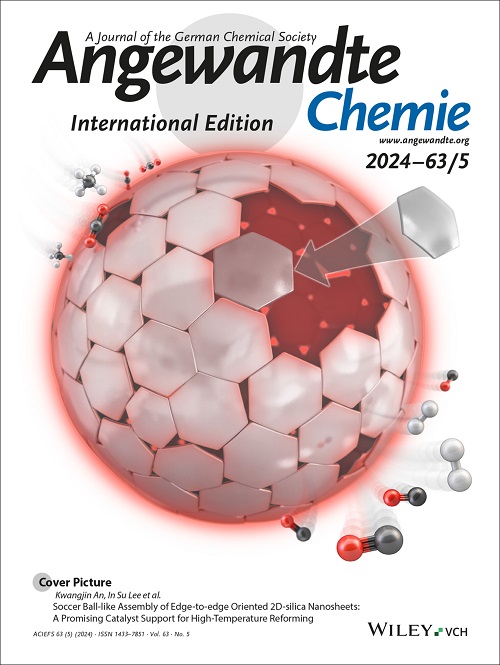超薄PtSe2纳米线在单壁碳纳米管中用于析氢反应
IF 16.1
1区 化学
Q1 CHEMISTRY, MULTIDISCIPLINARY
引用次数: 0
摘要
硒化铂(PtSe2)在电催化方面显示出巨大的应用潜力。一维(1D)纳米结构对于提高催化性能特别有利,因为它们在边缘暴露了丰富的活性位点并实现了快速电荷传输。然而,用于高效电催化的一维PtSe2纳米结构的合成仍然是一个挑战。在这里,我们报道了利用单壁碳纳米管(SWCNTs)作为约束模板,通过化学气相沉积(CVD)直接硒化,可控合成超薄(0.4 ~ 2.0 nm) PtSe2纳米线(NWs)。原子分辨电子显微镜结合光谱学和理论计算表明,PtSe2 NWs沿<;110>;方向,具有锯齿形边缘和更高的热力学稳定性。由于具有丰富的不饱和Pt原子,制备的PtSe2 NWs在极低的Pt负载(4.684 wt%)下表现出优异的析氢反应(HER)活性,过电位为47 mV@10 mA cm‐2,Tafel斜率为41.7 mV dec‐1。这项工作为合成一维超薄NWs提供了一种新的策略,并为未来实现低成本和高效的Pt基催化剂提供了潜力。本文章由计算机程序翻译,如有差异,请以英文原文为准。
Ultrathin PtSe2 Nanowires in Single‐Walled Carbon Nanotubes for Hydrogen Evolution Reaction
Platinum selenide (PtSe2) has shown great potential for application in electrocatalysis. One‐dimensional (1D) nanostructures are particularly advantageous for enhancing catalytic performance, as they expose abundant active sites at the edges and enable rapid charge transport. However, the synthesis of 1D PtSe2 nanostructures for efficient electrocatalysis remains a challenge. Here, we report the controllable synthesis of ultrathin (0.4‐2.0 nm) PtSe2 nanowires (NWs) using single‐walled carbon nanotubes (SWCNTs) as a confined template via direct selenization by chemical vapor deposition (CVD). The atom‐resolved electron microscope combined with spectroscopy and theoretical calculations revealed that PtSe2 NWs grow anisotropically along the <110> direction inside the SWCNTs, possessing zigzag edges and higher thermodynamical stability. Owing to the rich‐edges with abundant unsaturated Pt atoms, the as‐prepared PtSe2 NWs exhibit excellent hydrogen evolution reaction (HER) activity at an extremely low Pt loading of 4.684 wt%, with an overpotential of 47 mV@10 mA cm‐2 and a Tafel slope of 41.7 mV dec‐1. This work provides a novel strategy for synthesizing 1D ultrathin NWs and offers the potential to achieve low‐cost and efficient Pt‐based catalysts in the future.
求助全文
通过发布文献求助,成功后即可免费获取论文全文。
去求助
来源期刊
CiteScore
26.60
自引率
6.60%
发文量
3549
审稿时长
1.5 months
期刊介绍:
Angewandte Chemie, a journal of the German Chemical Society (GDCh), maintains a leading position among scholarly journals in general chemistry with an impressive Impact Factor of 16.6 (2022 Journal Citation Reports, Clarivate, 2023). Published weekly in a reader-friendly format, it features new articles almost every day. Established in 1887, Angewandte Chemie is a prominent chemistry journal, offering a dynamic blend of Review-type articles, Highlights, Communications, and Research Articles on a weekly basis, making it unique in the field.

 求助内容:
求助内容: 应助结果提醒方式:
应助结果提醒方式:


